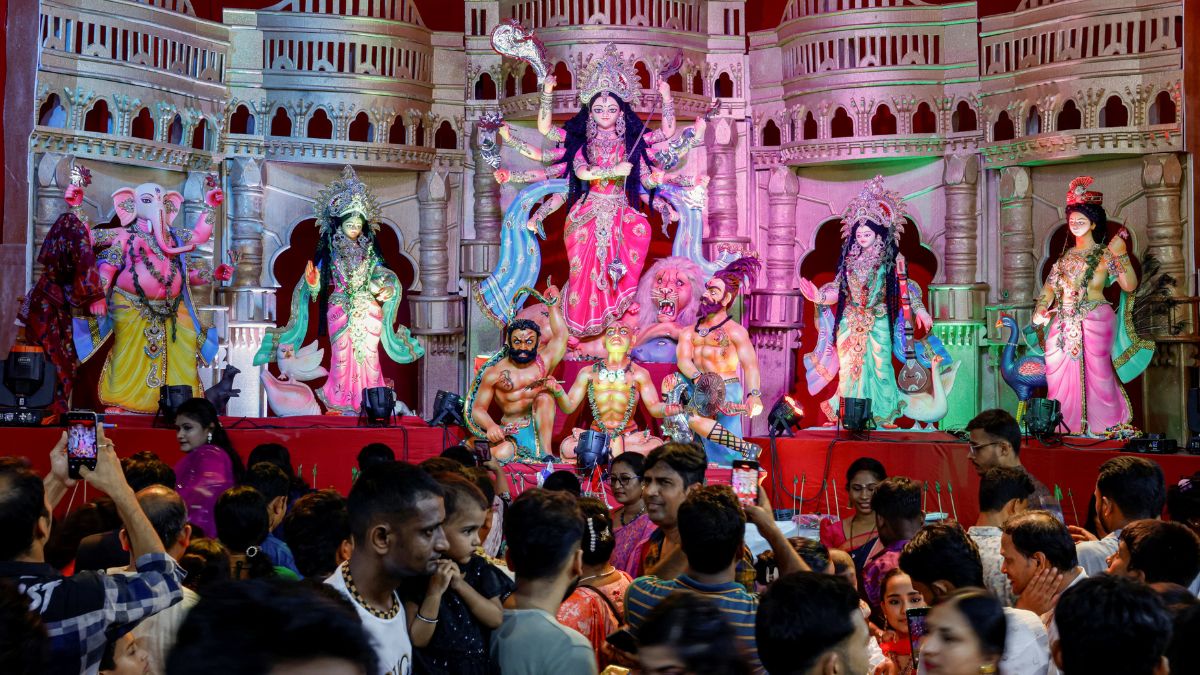Bangladesh has decided not to allow fairs near Durga Puja mandaps this year, days before the country’s biggest religious festival for minority Hindus.
Home affairs adviser Md Jahangir Alam Chowdhury claimed that such gatherings often involve anti-social groups who use them to consume cannabis and alcohol.
He added that security forces will remain on high alert at all times at nearly 33,000 mandaps across Bangladesh.
The move comes after reports of attacks on the Bengali-speaking Hindu community and demonstrations against the festival last year after Sheikh Hasina was ousted..
So, what can be expected this year? And how was Durga Puja celebrated last year?
Here’s a look:
How Durga Puja will be celebrated in Bangladesh this year
Md Jahangir Alam Chowdhury has announced that fairs will not be held near Durga Puja mandaps in Bangladesh this year. He said these gatherings often attract groups involved in consuming cannabis and alcohol.
“This time, fairs will not be permitted. However, one or two shops may be allowed, but only with the permission of puja celebration committees,” he told reporters after a preparatory meeting for Durga Puja.
When asked whether committees had raised any concerns, he said they had not and were confident that the festival would be held peacefully.
He further said that about 33,000 puja mandaps are expected to be set up across the country.
“The puja mandaps will be under 24-hour security surveillance as the Durga Puja can be celebrated peacefully like every year,” he added.
How fairs are part of Durga Puja celebrations
Locally known as melas, fairs are a long-standing part of Durga Puja, growing from religious festivities into large cultural and commercial gatherings.
They turn the areas around pandals into vibrant spaces for entertainment, food, and social interaction, becoming as central to the festival as the rituals themselves.
These fairs also host cultural programmes, provide a platform for artisans, and support local food stalls and small businesses.
Impact Shorts
More ShortsBangladesh allows export of Hilsa fish
Dhaka is sending its ‘Padma ilish’, a local name for the hilsa fish from the Padma river, to New Delhi for Durga Puja, continuing the tradition of combining culinary delight with cultural diplomacy.
Regarded as a prized delicacy, hilsa from the Padma River is a must-have in West Bengal during special occasions, depending on the season.
A circular issued on Monday stated that the Bangladesh government has approved the export of 1,200 metric tonnes of hilsa for Durga Puja, which starts on September 28.
What happened last year?
Last year, Durga Puja in Bangladesh was overshadowed by fear and violence.
Reports of vandalism, attacks, and intimidation in parts of the country reflected harassment of Hindus, who make up around eight per cent of Bangladesh’s nearly 170 million people, or more than 13 million individuals.
Despite promises to ensure safety, the festival was subdued, following the ousting of former Prime Minister Sheikh Hasina and attacks on minority communities, particularly Hindus.
Notably, Bangladesh’s interim leader, Nobel laureate Muhammad Yunus, has faced serious challenges in maintaining law and order since taking office in August, and Durga Puja was seen as a key test of his administration’s ability to protect minorities.
Several temples in Dakop, Khulna, reportedly received anonymous letters demanding 5 lakh takas as a “tax” to allow them to celebrate Durga Puja, according to The Times of India.
Several temples in Dakop, Khulna, reportedly received anonymous letters threatening to not allow them to celebrate Duga Puja unless they each paid 5 lakh takas as “tax”, The Times of India reported.
Minority groups have criticised the Yunus-led government for not doing enough to protect them, and reports indicate that hardline Islamist groups have become more politically visible and influential since Hasina’s removal.
With inputs from agencies
)